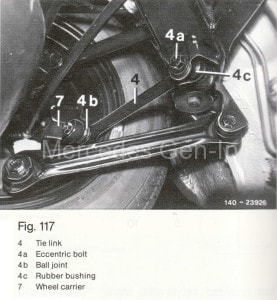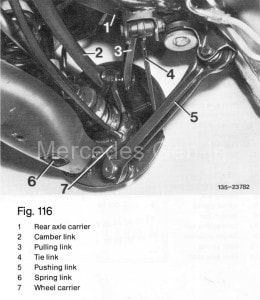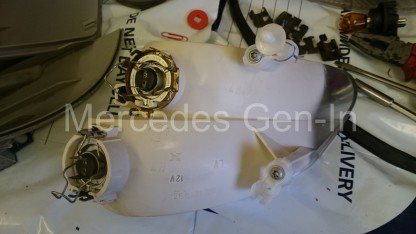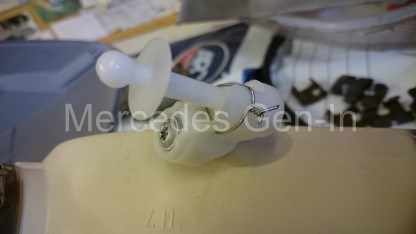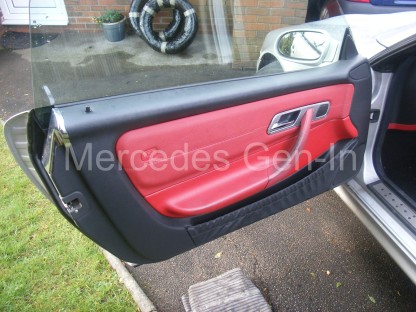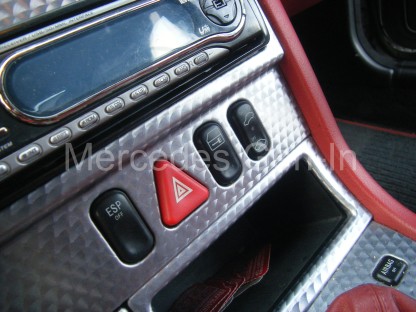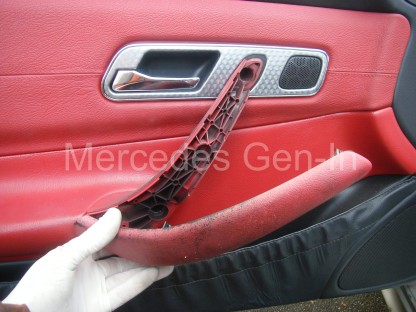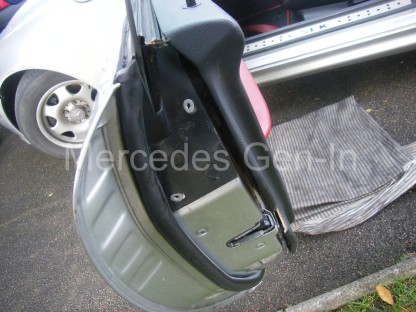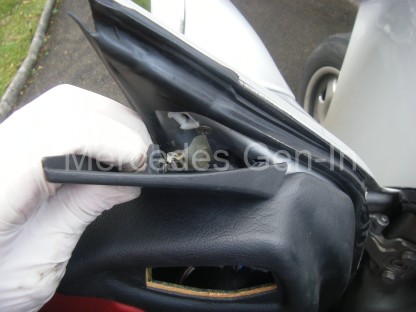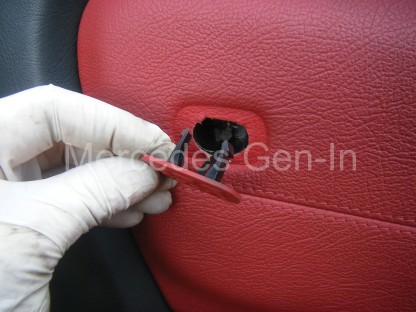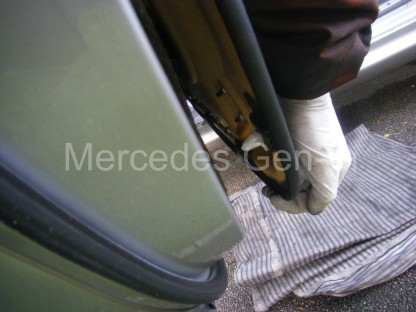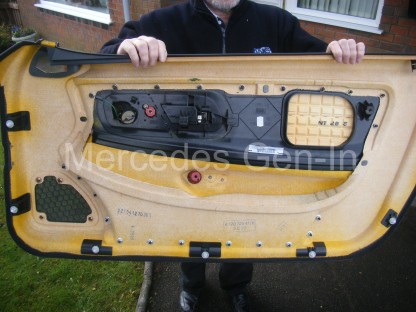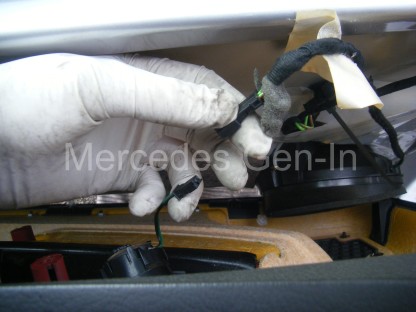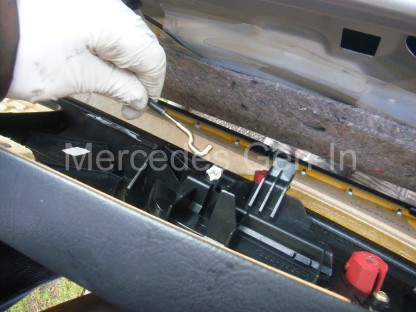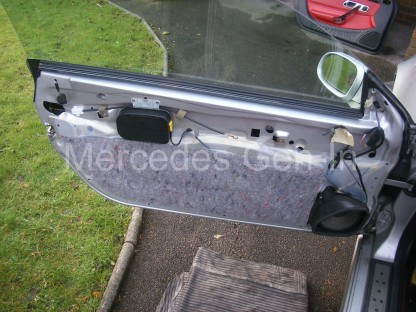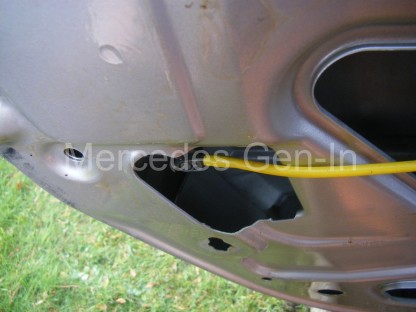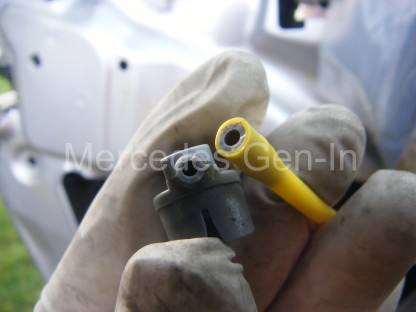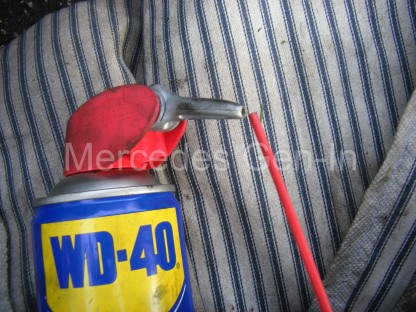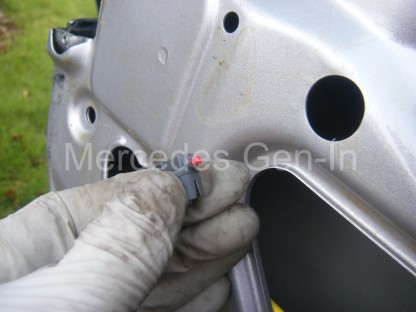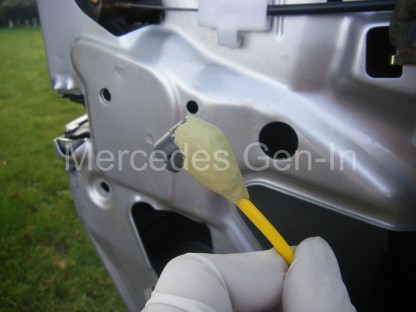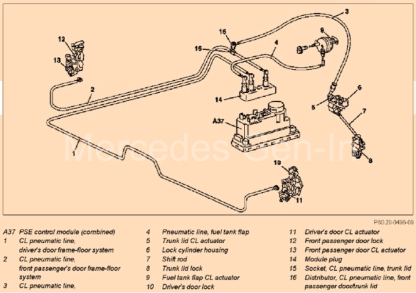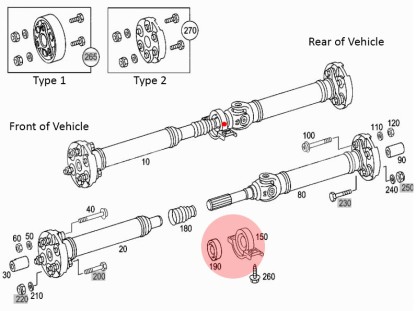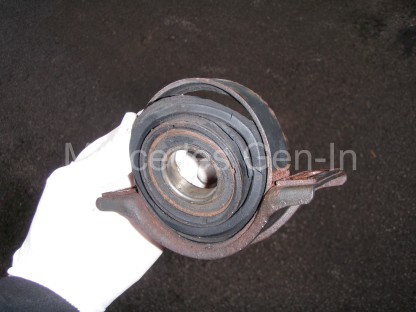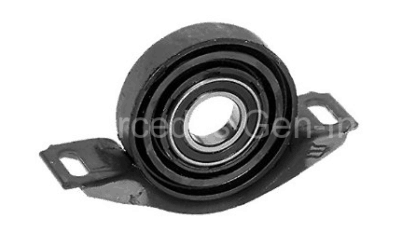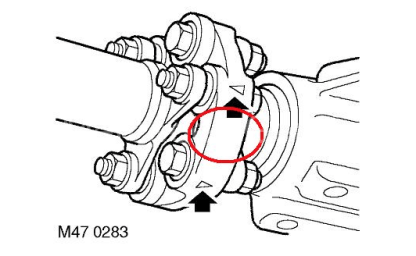ABS faults can be complex to solve but often it is the simplest of things that causes those dreaded lamps on the dash. If there is an issue with any wheel speed sensor arrangement on any corner, then this will prevent a number of things working correctly, namely ABS, TCS, ESP, BAS, Cruise Control/Speed Limiter and on the SLK power operation of the Vario roof too. So it needs to be fixed. It is now also a critical tested component in the UK MOT annual check – any dash warning lamps of this kind will immediately fail the inspection and prevent you from obtaining that valuable certificate.
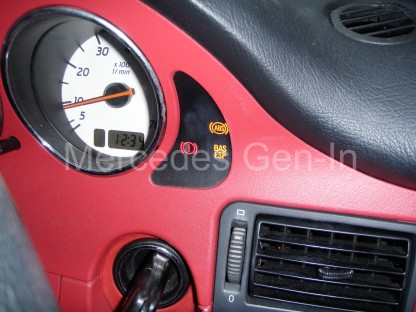
Intermittent ABS light faults are often attributed to dirty or poorly adjusted wheel speed sensors, even poor connections or weakly performing/damaged sensors can flag faults. These faults are usually reasonably cheap to sort, though problems with the pump or controller can run into many hundreds to fix. With this in mind, it is prudent to always check the simple things first, then move on to the ‘eye-wateringly’ costly parts when all other avenues have been followed and options exhausted. So where to start…
Fault finding can be very hit and miss without a compatible Fault Code Reader that can access the MB systems protocol. There are many on the market to choose from and probably the most capable will be from the Autel range. Be sure what you are buying covers the ABS system, as often less expensive readers only cover engine fault codes and leave the purchaser no better off when it comes to tracking faults in the ABS, SRS or other Body electronics. I use two or three tools, the most flexible and economical is the Autel 702 Maxi-Diag Elite, this can be purchased for under £150 if you search around for the best deal.
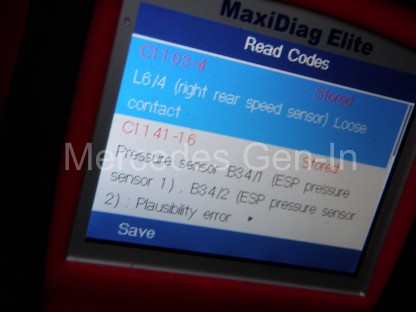
However if you don’t initially want to run to that expense and you may be able to find a friendly independent mechanic who can read the system for you and tell you where the problem lies. Do remember that if you go to a dealer for a code read, it is likely to cost around £45 to find where the problem lies. You will then have to take it back to get the fault cleared once repaired, so as you can see you are getting pretty close to the cost of owning your own powerful diagnostic tool that will stand you in good stead for the future. If you have an older Mercedes vehicle pre 2000, then you will have less choice of code reader and things get a little more complex – you can catch up on older vehicle diagnostics here.
There are common faults that can cause problems throughout the Mercedes model ranges, no different with ABS than any other system. If you get unwanted ABS activation at slow speed, when rolling to a braked stop. This is often caused by the wheel speed sensor on one or more wheels not detecting its rotational impulse cleanly. This is called ‘falsing’. The controller is being fed an inaccurate stream of speed signal impulses that makes it think that one of the wheels is skidding and it applies (wrongly) the ABS to that wheel. On W124 models, this was often caused by the magnetic speed pick up sensor devices on the front wheel hubs attracting metal rust debris, ending up looking rather like a christmas tree of iron filings. The pulsed electrical induction signal from the sensor as its paired slotted ring on the rotating part of the axle whizzes by, is masked by the ‘growth’ of collected iron and rust on the sensor head, making what should be a very clean and precise tiny electrical signal, into a low level ‘blur’ in layman terms. Simply removing the sensor and cleaning it up in a great deal of cases will result in a cure for this problem. If this does not cure the issue you will have to look more closely at the condition of the slotted or toothed ring that can be seen at the base of the sensor hole, this part passes the nose of the sensor as the wheel rotates. On the front wheels of the vehicle this ‘reluctor ring’ or ‘tone wheel’ is often a vertically orientated slotted disk mounted behind the brake disk, attached to the rotating hub. Unless corrosion has taken its toll, the front tone rings seem well protected from the elements and do not often give trouble.
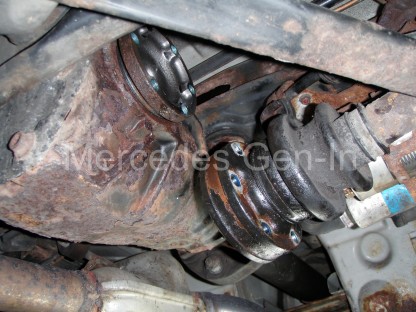
On the rear, most Mercedes cars have flat slotted punched-out reluctor rings ‘sweated’ onto the outer surface of the outboard CV joint casing, just as it passes through the hub carrier. Often out of the factory this forms part of the complete half shaft and if it gets damaged a few years down the line, or as it often does – corrodes, then the complete drive shaft/joint had to be replaced at quite a tidy sum.
…Enter the wonderful world of the ‘Far East’ on that popular auction site. A wonderful factory somewhere in the world now produces just the 48 window (slots) 92mm reluctor ring (also common to SL R129 and many others) that you can fit to your existing half shaft and get things going for under £10 component cost. Needless to say it is quite involved to fit as you obviously have to remove the drive shaft from the vehicle to carry this out. Link to reluctor ring seller.
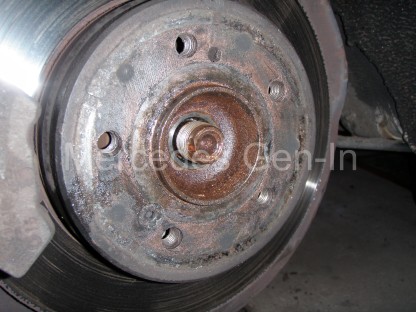
This article covers the fitting of a rear drive shaft reluctor ring to a 2001 Mercedes SLK200 R170, though the procedure will be common to many other MB models. If you discover the faulty ring is on the side that has the exhaust passing by the drive shaft then you have a little more work ahead, as it often involves the partial removal of the exhaust system to obtain full access. If however, if it is like in this case – on the right rear of the vehicle, no such removal is needed.
Reluctor ring replacement
You may wish to initially remove the wheel sensor to protect it from accidental damage. Then you will need to obtain a 32mm 12 point socket. With the hub centre embellishment removed from the wheel (Alloys), with the handbrake set, in gear, while on the ground, peen out the locking tab on the hub nut. Fit the socket and with the aid of a breaker bar, remove the centre hub nut from the end of the drive shaft. Spray a good quantity of penetrating oil onto the shaft end so it travels down the splines within the hub. You may need to slip a tube over the breaker bar to ‘crack’ the hub nut off, as if not recently removed it will be very tight indeed.
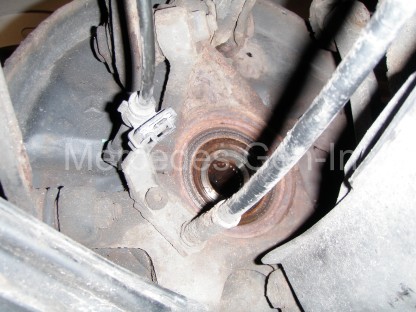
Now raise the vehicle so the differential is at least high enough to be able to swing a 21 inch breaker bar beneath the car (those inboard CV-to-output flange bolts will be incredibly tight) Chock and make sure your working area is safe then remove the 6 reverse torx bolts from the inboard flange of the drive shaft. These have been thread-locked with a compound that must be the almost as strong as the bolt itself! It will take some muscle to remove these pins, so be prepared. Always seat the reverse torx socket on the pin with a copper hammer, not only does this ensure the socket is seated as far as it will go onto the head but the ‘rapping’ helps to jar and break the joint. Remember – good well fitting tools are important here as if you twist up the head with an ill-fitting socket, you will be left with a huge ‘near impossible’ job to remove it.
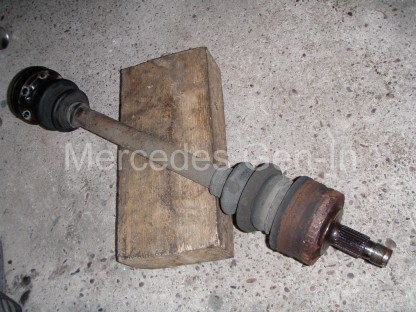
Once all six flange bolts and tri-plates are removed the shaft can be pulled down towards the front of the vehicle. In some cases you will have to remove the plastic cover over the fuel pump to gain adequate opening to ease out the shaft end. Its a tight fit, but it will come clear and hang down just below the nose of the diff. Now take a copper drift and stout hammer and whack the end of the drive shaft, it should with a few blows begin to move, once it starts to move tap it with care so it passes through the splined hub centre. Support the shaft as you tap and once free, guide it out from beneath the vehicle. While it is off, check the CV rubber dust boots on both ends for damage/wear/cracks/splits as this is a perfect time to change them.
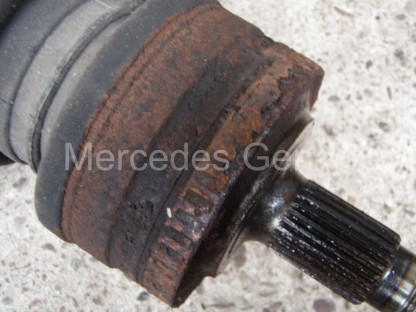
Remove all traces of the old reluctor ring and file the surface clean to prepare it to accept the new ring. File deliberately more material off the outer edge to allow a slight taper lead-in for the new ring. Once you are satisfied that the area is nice and clean and smooth, prepare to tap home the new ring onto the CV joint casing. Heat up the new reluctor ring with a blow torch, don’t go too mad, just enough to make it hot. Then with a gloved hand, place it centrally and tap gently around the perimeter of the ring to drive it home into position. In this case it was easy to see the exact location and position of the old ring, if you are not so lucky then use a torch to inspect the opposite side of the vehicle to get the correct placement dimensions you need.
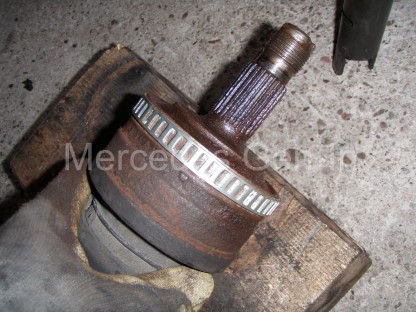
Once the new ring is fitted, the drive shaft can be assembled back into place and the other parts built up around it, much in the same way as they were removed. Be sure to tighten the hub nut to the same position as it was prior to removal so the lock tab can be tapped back into place. If you can obtain 6 new flange bolts for the reassembly, then that would be best, failing that be sure to wire brush the old screw lock compound from the threads before reusing.
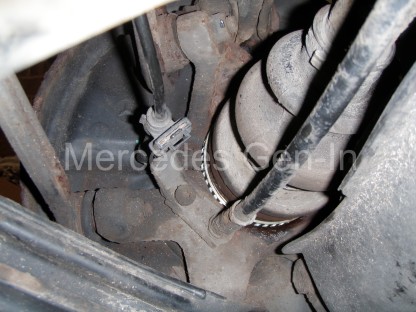
Once the vehicle is back on its wheels on level ground, insert the code reader into the OBDII diagnostics port, then read and clear the ABS speed sensor related faults from the controller. Finally road test. You will most probably now have no warning lights on the dashboard and be able to enjoy once more a fully functioning set of connected vehicle features that were all lost while the fault was present.
SPECIAL NOTES FOR LEFT HAND SIDE RELUCTOR RING REPLACEMENT
Because of the proximity of the exhaust and restrictions of access for the removal of the left hand drive shaft it is possible to remove the lower link bolt (lower wishbone to hub carrier), the ball joint of the tie link and hub end of the pushing link (lowest fixing on the hub carrier) See diagrams below to identify component attachments to be removed. Once these fixings are removed it is then possible to pull the hub at the bottom just far enough out to allow the drive shaft outer CV joint to slide out its hub spline and hang down to clear the carrier so the new reluctor ring can be fitted. Just remember to pre load the suspension as if the vehicle was standing on level ground before retightening the removed bolts. This is a practical alternative method to removing the drive shaft completely from the vehicle.
